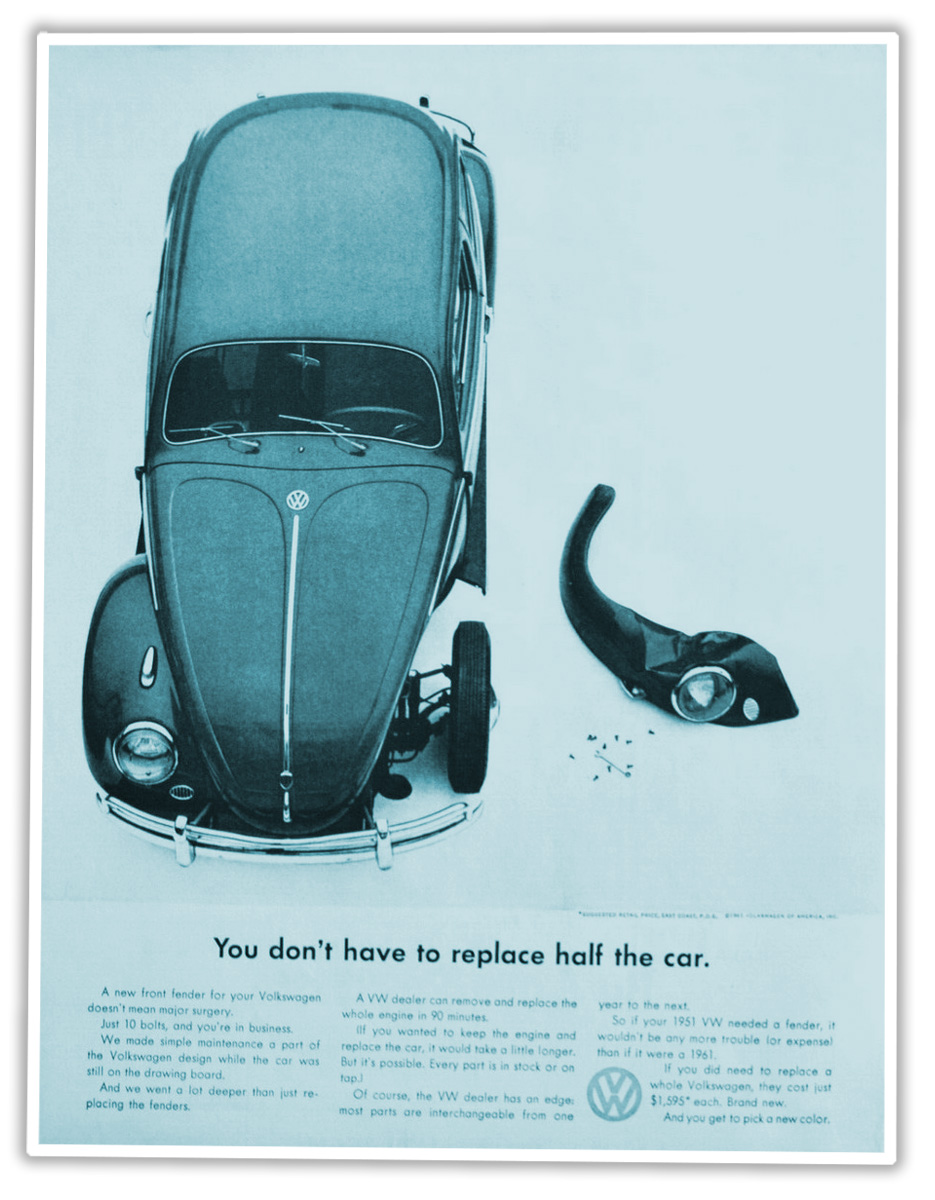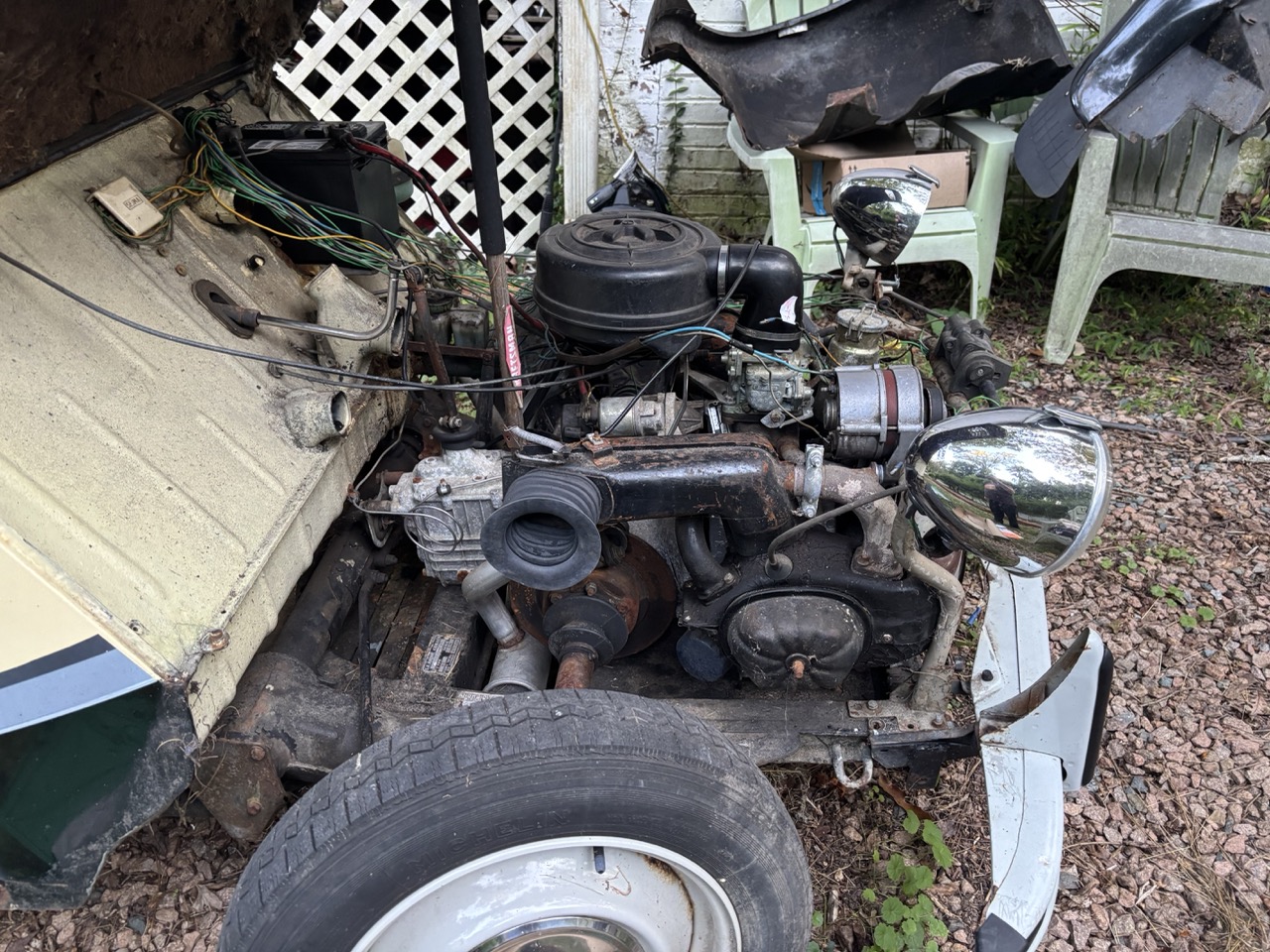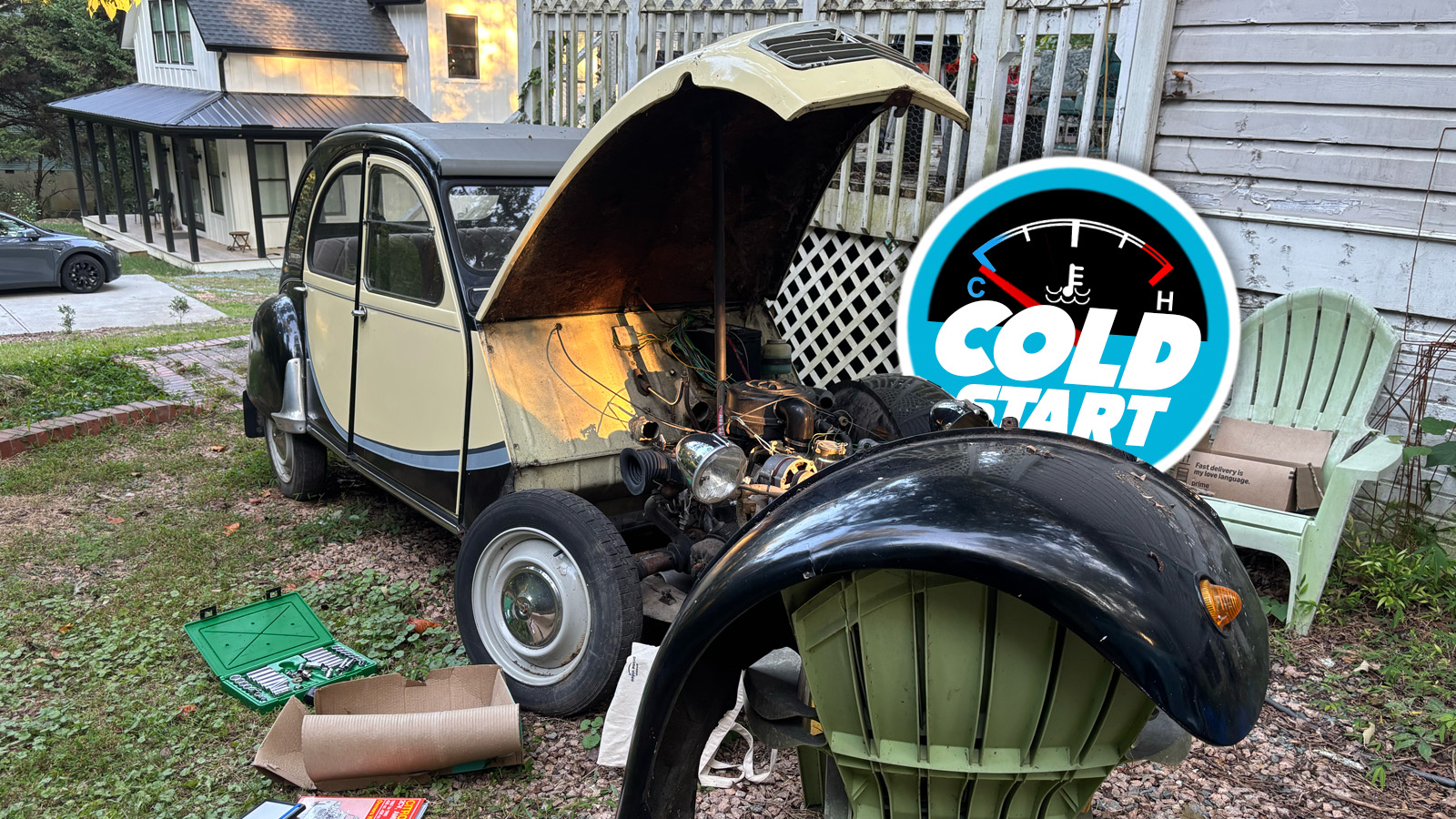I tend to use the term “supercar” in a different way than the common usage, which I feel is limiting. To me, a supercar is a car that has specific traits that perform so much better than the norm, they get elevated into, well, superhood. Most cars we think of as supercars now, like a McLaren P1, for example, are supercars in the categories of speed and acceleration. Remember the Volkswagen XL1? That was a fuel-economy supercar. Mid ’60 Cadillacs may be comfort supercars, A VW Type 3 or 4 could be a packaging supercar, and so on. And I think I found two interconnected ways that my Citroën 2CV is a supercar.
I found these out last night – well, I think I knew of them before, but never experienced them firsthand, and so didn’t fully realize their superhood – when I was getting the car ready so I can work on it tonight, when a local Citroën expert is coming by to help me see if I can finally get this thing started. I feel bad because I haven’t had much time to devote to the car since I got it, but I’m hoping to turn that around. And, of course, get it running.
Anyway, back to the supercar stuff. The two categories of supercar I think the 2CV qualifies for are the coveted Ease of Fender Removal Supercar and the Engine Access Supercar.

Laugh if you must, philistines, but these are a big deal, as far as I’m concerned! If you look at the picture up there, you can see that while the open hood of a 2CV gives decent engine access, it’s only okay. Getting access to the cylinder heads and the valves within on that flat-twin isn’t really easy, as those bulbous fenders block access pretty effectively. I have removed already the triangular-ish filler panels that fit in behind the fenders, and with those gone you do have good access to the transmission and inboard brakes.
But I want more access. And the 2CV expert who is coming by after work today suggested I remove the fenders, so I decided to give that a go. And holy crap, I was delighted.
I’ve removed fenders from a number of cars, including my old Scion xB, a VW Passat, and of course my ’73 VW Beetle, which I had always considered one of the easiest fender removal jobs there was. VW even made ads about this idea:

Just 10 bolts, and it’s off. Pretty easy, right? Well, I soon learned that even that is a colossal chore compared to the 2CV. First of all, the 2CV front fenders are held on with four bolts, not 10, for a 60% reduction in boltage! Holy crap!
And those bolts are shockingly easy to access; in the Beetle, they’re arrayed in an arch on the inner lip of the fender, so you have to get under there, behind the wheel and suspension bits, to access them. Look where they are on the 2CV; here’s bolt one:

It’s right there, outside of the car, by the trailing edge of the fender. Here’s bolt two:

Two is down low, under the hood, just above the bumper bracket. Here’s three:

It’s right above bolt two, just under the headlight mounting bracket. And finally, bolt four:

Four is right by the firewall, nice and easy to access.
That’s it! Those four bolts, and the whole fender lifts off! And, even better is how the fenders are shaped; on the Beetle, the fender is basically C-shaped, and there’s still a lot of body left behind when it’s removed. Same for more modern unibody cars I’ve pulled fenders from, where the fender is really just an outer skin and there’s all that unibody hardware left behind. Not so with the 2CV. The Tin Snail’s fenders are more like whole wheel pockets, and are shaped like this:

See how they have an inner wall? That hole is where fresh air is pulled from the wheel well to feed the heater, if you’re curious. The fenders are kind of like big pita breads that hold the wheel inside, minus the humus (usually).
The result of this setup is that when the fenders are off, there’s pretty much no body left in place in that area, and access to the engine becomes incredibly good. I mean, look:

Look at that! You can get to pretty much everything there: cylinder head, CV joint, brakes, axles, fuel system, exhaust system, everything is right there.
When so much of working on a car is being in uncomfortable positions and shoving your hands into impossibly tight and greasy alleys between scrape-y and sharp-edged parts, this feels like a dream.

The whole front part of the body is just five parts: two fenders, two of those side filler panels, and the hood. That’s it. Take those off and you’ve got a car with an entirely exposed drivetrain.

Of course, the wiring is still a mess, but at least I can get to everything easily. I hope I can get this thing running tonight.
Also, with the hood down and the fenders off, I think it looks pretty tough, in a kind of Maxmaxian way:

At 5:30 the 2CV expert shows up. Wish me luck!









Don’t share this on TikTok or there will be a rash of 2CV fender thefts. 🙂
I would absolutely rock that thing with the fenders off
Well Jason for ease of fender removal I’d put an GM 70S car and the Red Green method of fender removal, just drive into something with it.
And to bastardize A Red Green saying
You know what they say Jasons supercar is David Tracy’s Holy Grail.
I like that the headlight is still attached and functional . And you can actually drive around with all the front sheet metal removed, like a rat-rod.
Citroen was very good at the whole fender removal thing. Rear fenders on a DS were held on with a single bolt.
But the supercar king of this for ‘fender removal’ and engine access is my Triumph Spitfire. Tilt the whole front of the car up and out of the way. And if you REALLY want it out of the way, it’s only three bolts, a wiring connection for the lights, and two strongish people to remove the whole thing (it’s not that heavy, but it’s awkward being half a car).
But I think the 2CV is the most brilliant “minimal car” that ever was. So brilliantly simple, yet incredibly sophisticated at the same time. The Trabant is probably a close second, but they are such joyless things by comparison. You can’t help but smile (and sing in the French way) in a 2CV.
Did you mean Madmaxian?
Good luck! The wiring restoration looks, uh…challenging